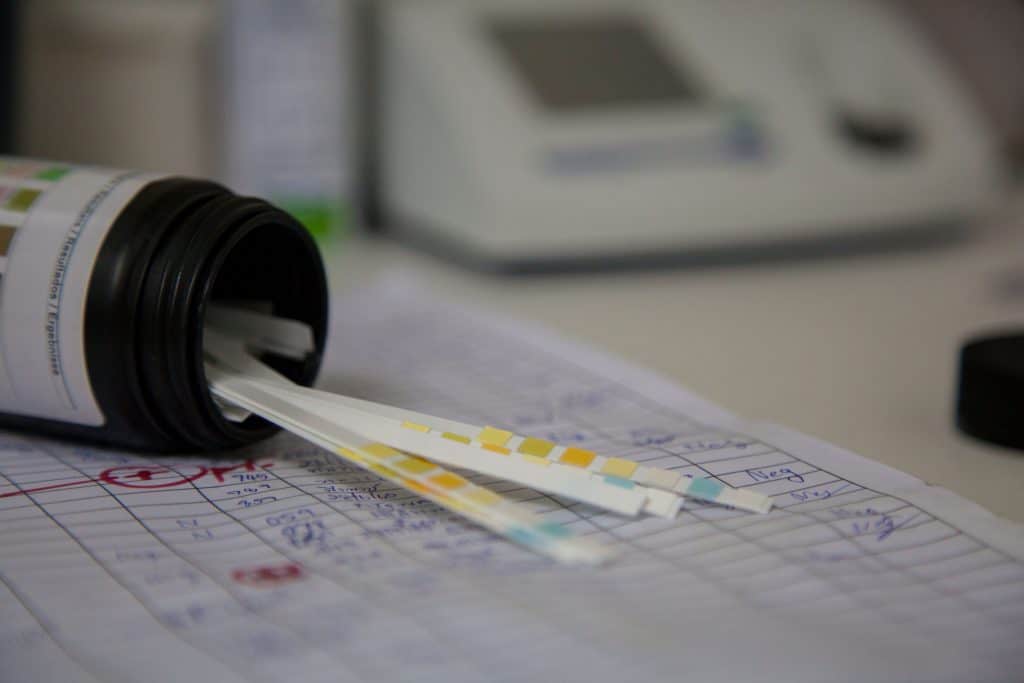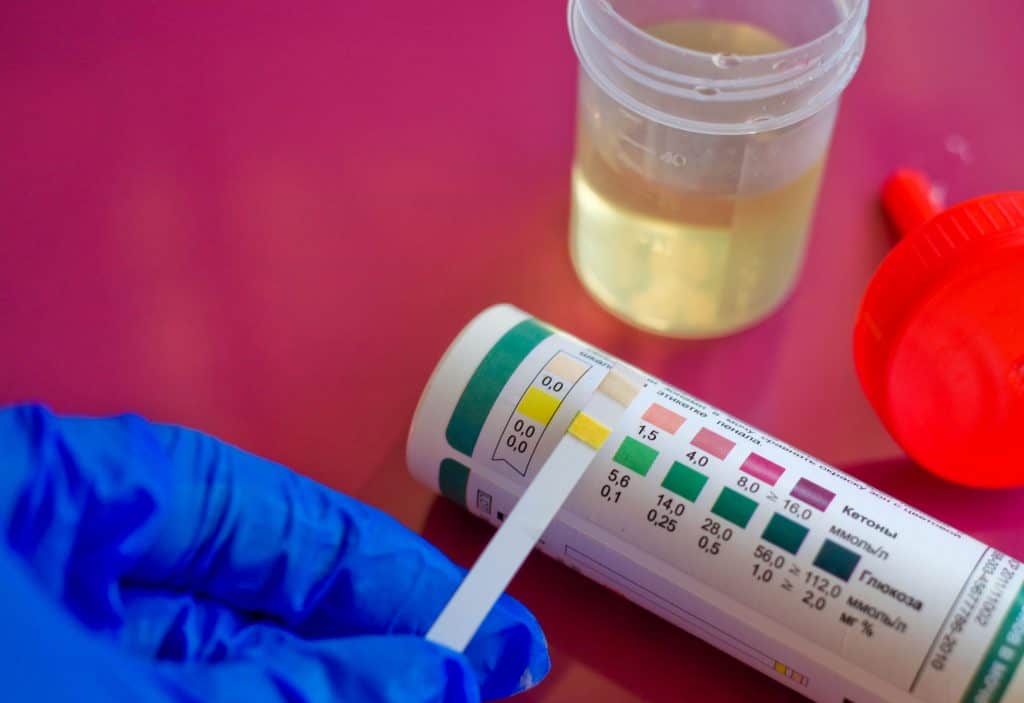What Does Moderate Mean on Ketostix? Moderate Ketones – A Guide
Posted by Prescription Hope - See Editorial Guidelines (Last Updated On: Fri Apr 21 2023)
As you may already know, ketostix are used to measure the level of ketone concentration in the urine. Diabetes patients more commonly use this, and some may use them for following up on a keto diet for weight loss purposes. Many users of ketostix have several concerns and assumptions about what moderate on ketostix mean and the potential consequences.
So, this article will give a clear understanding of what moderate means on ketostix, how to know if it’s moderate, what are the consequences, and much more.
Let’s first give you the quick answer to get you started, and then we’ll head into more details.
What Does Moderate Mean On Ketostix? Moderate on ketostix means the level of ketones in the urine – the concentration of the ketone – is moderate. When ketostix show moderate levels, it provides a color between the shades of pink to magenta. 30 to 40 mg/dL is the indication for moderate. Moderate means there is fat metabolism, and weight loss may be present.
In order to understand more about this subject, we first need to know how ketostix work.

How Ketostix Work?

The human body uses glucose or sugar as the primary source for energy. When these cells don’t get the glucose they need, the body begins to use the fat reserves in the body to produce the energy it needs.
When using these fats, or burning these fats, the body starts producing something called ketones. These ketones are a type of acid that ends up in the urine and blood, which can be life-threatening for diabetes patients.
A non-diabetic patient on a ketogenic diet for weight loss reasons may have ketones in their urine. This would be known as ketosis and is not harmful in most cases. However, for a patient with diabetes, ketones in the urine can indicate diabetic ketoacidosis, which can be extremely harmful. This condition is more common among patients with type 1 diabetes but can occur in patients with type 2.
So, for diabetes patients, especially those with type 1 diabetes, doctors may urge the patient to check for ketones in the urine continuously. This is because a high level of ketones for diabetes patients means that the body is not getting enough insulin to transport the glucose to the cells to be used for energy.
Therefore, unused glucose remains in the bloodstream, which increases the blood sugar levels because of insulin deficiency. Hyperglycemia alone can lead to several serious health conditions like heart diseases, vision problems, stroke, and nerve damage. Diabetic ketoacidosis can lead to a coma and even death in severe cases.

What Does Moderate Mean On Ketostix?
Moderate on ketostix means the concentration of ketones is moderate (which, of course, is neither too low nor too high).
You can know the concentration of the ketone is moderate through the color guide provided on the ketostix container. It shows different shades that indicate the level of ketones concentration.
The color you get from the urine test can also be matched with a specific number or range listed. The guide goes from small to moderate to large and shows the level of ketone concentration.
The results and the color you get on the ketone test strip indicates the following measurements of ketones in the urine.
- Small: <20 mg/dL – This is a normal indication of ketones in the urine. At this level, there is nothing to worry about. It’s recommended to monitor and maintain this level as much as possible.
According to the ketostix color palette, this range should give a color between the lighter shades on the far left of the color palette. This would often be from beige to cream or white.
- Moderate: 30 to 40 mg/dL – The moderate level of ketones indicates fat metabolism and weight loss, but this does not mean an insulin deficiency like hyperglycemia.
However, when a diabetes patient has this level of ketone concentration, it’s recommended to speak to the doctor or diabetes educator on what to do to reduce the concentration of ketones.
This is because the moderate level of ketones is not something to be worried about. However, if the level of ketones reaches the next level, it can quickly lead to diabetic ketoacidosis (DKA).
On the color palette, a moderate level of ketone concentration should show the colors between light pink to magenta.
- Large: >80 mg/dL – This level means you need to seek medical assistance. This level of ketone concentration indicates that the person is going through DKA.
DKA can lead to coma or even death if urgent medical attention is not given. In the ketostix color palette, a high level of ketones concentration should show colors between purple to dark purple.
Moderate on ketostix may mean that the blood sugar levels are relatively higher than normal, and an accurate insulin administration plan is needed.
However, if you test for ketones multiple times, just hours apart, and receive different readings, then it could be that you were dehydrated. Dehydration may cause an inaccurate reading of ketones. Ketostix are sensitive to dehydration, and so the colors could change on and off through the day in-between hours.
So, it’s important for anyone using ketostix to make sure you are well hydrated before taking the test.
It should be noted that ketostix measure the concentration of the ketones in the urine, which excludes the level of ketones in the blood. A blood ketone test will be the most accurate but is not as readily available.

How to Control Moderate Ketone Concentration
One can use several methods to control the moderate level of ketone concentration and bring it down to a normal level. Drinking plenty of water can help flush ketones out of your body.
Since a high ketone concentration can mean high blood sugar, one may need insulin therapy. If you are already on insulin, then you should call your doctor to discuss adjusting your dose. By lowering your blood sugar level with insulin, you will also reduce your concentration of ketones.
Also, it’s advised to get a doctor’s recommendations on what they recommend when there is moderate or high ketones concentration.
When ketostix show moderate levels, you should watch for several signs to avoid these levels from going higher and leading to DKA. Early signs of DKA include:
- Stomach pains
- Frequent urination
- Fatigue
- Dry mouth and skin
- Nausea and/or vomiting
- Breathlessness
- Breath that smells fruity
If these symptoms are identified, it’s recommended to test for ketones and seek immediate medical attention if necessary.

Conclusion
Enroll with us to find out if you’re eligible to pay only $60.00 a month through Prescription Hope’s medication access service for each of your medications. Prescription Hope works with over 180 pharmaceutical manufacturers and utilizes their patient assistance programs to provide you with this flat-rate cost for your medication.
ENROLL



